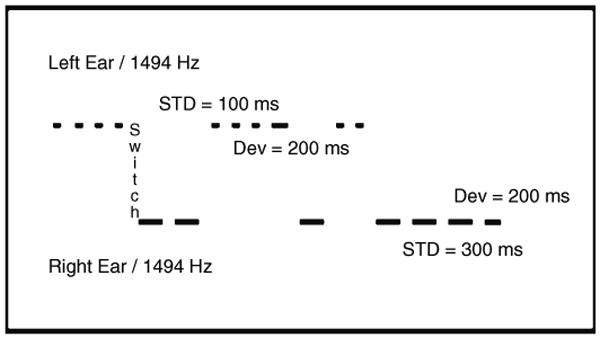Fig. 1.

Schematic representation of the stimulus design used in Ritter et al. (2006). Tones were presented in a quasi-random manner with one to four tones of one set followed by one to four tones of the alternative set. Tones presented to the left ear were 1494 Hz and 100 ms [standard tone (STD)] or 200 ms [duration deviant (Dev)] in duration. Tones presented to the right ear were 440 Hz and 300 ms (STD) or 200 ms (Dev) in duration. A switch deviant was defined as a change of tone delivered to one ear that was preceded by four tones presented to the other ear.
